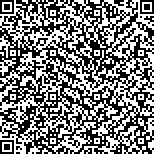| 摘要: |
| 在城市的边缘区域存在着数量庞大
的市郊村落,其外部空间本是村落公共活动
的物质载体。如今在快速城镇化的大潮下,
市郊村落受到城市扩张等外部力量的侵蚀而
衰败,外部空间面临重构的需求迫切。通过
提取外部空间的村落位置、平面形态和竖向
形态三个核心变量,建立空间直角坐标系模
型对村落外部空间进行特征分类;进而展开
外部空间的两次转译与设计表达:一方面,
结合空间组构解析对空间变量的属性进行
量化描述;另一方面,通过参数化建模软件
实现空间语汇的转译与建造体系的引入,生
成可视化的建造形态。研究选取福州市厚美
村八处具有代表性的外部空间进行更新实
践,结果表明:通过外部空间的两次转译,能够将空间特征规律通过信息加工输出,得到竖向层次、结构密度和相对数量三个影响因子,进
而形成一系列符合场地空间属性的要素语汇以供设计者和使用者双向选择,最终提出可视化、
易操作的建造目标,借助小尺度、渐进式的“点式切入”更新方式提升村落人居环境品质,以期
为“在地城镇化”背景下市郊村落的外部空间的更新优化提供有益的设计参考。 |
| 关键词: 市郊村落 外部空间 空间句法 参数化 转译 |
| DOI:10.13791/j.cnki.hsfwest.20210516 |
| 分类号: |
| 基金项目:教育部人文社会科学研究规划项目(20YJAZH063);
国家自然科学基金青年基金项目(51808123) |
|
| Parametric Type Research and Design of Exterior Space in the Outskirt Village: TakingHoumei Village as a Case |
|
CHEN Jiawei,ZHANG Binghua,LI Jiajun,LIN Wanjing,LIN Zhisen
|
| Abstract: |
| Urban fringe is the product of urban expansion and the special area with the
most prominent and complicated contradiction in the process of urban construction. In
this kind of mixed urban and rural spatial structure, there are a large number of outskirt
villages, which carry the local unique historical and cultural resources and have the
special potential to optimize the relations between urban and rural areas. The exterior
space of outskirt villages is originally the material carrier of village public activities. Now,
under the tide of rapid urbanization, the erosion of external forces such as urban expansion
and the spontaneous expansion and indiscriminate construction of villagers lead to the
destruction of the exterior space, which is in urgent need of reconstruction. The gradual
micro-renewal of the existing built environment and its exterior space and the preservation
of the unique spatial pattern and historical context of the village are not only the practical
needs to realize the contemporary transformation, but also the inevitable requirements for
the coordinated development of urban development and village protection.
As the object of research, the exterior space of outskirt villages is characterized by
diversity, complexity, and abundance. Typology is used to abstract and restore it in this
research. By enumerating and comparing a variety of variables that affect the spatial nature in
reality, three core variables reflecting the characteristics of the village’s exterior spatial fabric
are finally screened and extracted: the location of the space in the village, the plane form of the
space, and the vertical form of the space. The spatial coordinate system model is established
to classify the features of the exterior space of the village. Three variables were successively
defined as X (the location of the space in the village), Y (the plane form of the space) and Z (the
vertical form of the space). In this spatial coordinate system model, all types of exterior space
in the village are covered and included, in which a certain P coordinate point (X, Y, Z) is thespace type representing a specific attribute.
On the premise of feature classification, the research carried out two translations and design expressions of exterior space. On the one hand,
the first translation of three variables was carried out through the fabric logic of space, and the spatial attributes of three dimensions, namely,
ambiguity, openness and envelopment, were obtained. Three parameter variables, namely, road integration value, visual depth value and aspect
ratio, were combined with the spatial fabric analysis tool to quantitatively describe the attributes of spatial variables. On the other hand, through
the introduction of the modular framework construction system of 3.6 m*3.6 m*2.7 m, combined with the parametric modeling software to
achieve the translation of the spatial vocabulary. The visual construction form under the control of the three parameters of vertical hierarchy,
structure density and relative quantity is generated, the internal spatial attributes that the villagers cannot recognize are transformed into visual
and easy-to-operate construction targets, and the villagers are guided to reconstruct the disordered exterior space based on the factual rationality
of the village.
Two translations and the expression of exterior space, from the reality space variable attribute quantification abstract description to the
space numerical visual form and the parameterized expression, is a realistic environment that will feature abstraction for feature information
typed processing, then the output characteristics of law and the space information processing direction and reconstruct the process of the real
space form. This reflects the tool rationality and thinking rationality of architects, and also puts forward some guiding design strategies for the
optimization and improvement of exterior space.
On the basis of the research on the translation of exterior space, taking Houmei Village in Fuzhou City as a case, eight representative
space types in Houmei Village were selected in which design practice was carried out. On the one hand, based on the spatial translation method
described in the research, each exemplary base in the village was determined to match the actual construction structure with its spatial type.
On the other hand, it returns to the specific and practical situation of the space, conducts further practical investigation on the behaviors and
activities of the villagers in Houmei Village around the space, and identifies more specific space requirements. Through site investigation, the
modular construction system is combined with the actual needs of villagers, and the corresponding exterior space renewal strategy is proposed.
This research aims to promote the optimization of village land use and the improvement of public space quality by means of space design,
excavate the core value of exterior space and activate the internal vitality of exterior space, so as to provide useful design reference for the
renovation and optimization of outskirt villages’ exterior space under the background of in-situ urbanization. |
| Key words: Outskirt Village Exterior Space Space Syntax Parameterization Translation |


